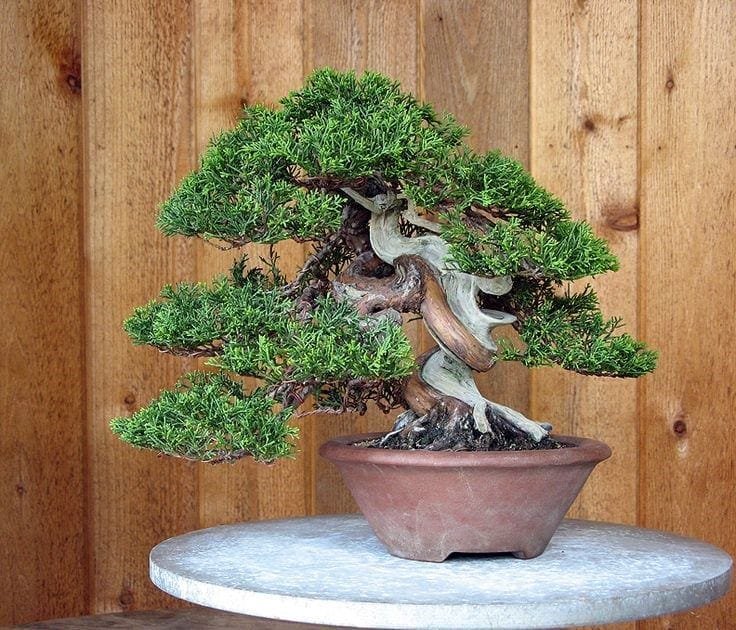Juniper trees have turned into some of the most emblematic varieties that make a wonderful and beloved choice for being introduced to the art of bonsai.
The Juniper family consists of a myriad of different species – about 60 in number.
Well-known and highly valued for their ability to tolerate a wide variety of environmental conditions, junipers have become one of the standard bonsai trees that even beginner bonsai enthusiasts recognize with ease.
The carefully curated soil guide for growing Juniper bonsai below will help you understand the needs and preferences of this amazing tree variety better.
Best Soil for Juniper Varieties
Some of the juniper varieties that make splendid bonsai trees include Juniperus sabina, Juniperus californica (California Juniper), Juniperus occidentalis (native to the US Sierra Juniper), Juniperus sargentii (Japanese Shimpaku), Juniperus procumbens nana (Green Mound Junipers), Juniperus communis (common juniper), Juniperus chinensis (Chinese juniper), Juniperus rigida (Japanese needle pine), among others.
It is important to keep in mind that each tree variety of the Juniper family has unique traits – for instance, some species are less prone to pests’ infestations than others which are the case with Japanese junipers.
As a rule of thumb, the higher the quality of soil, the better.
You can grow a juniper bonsai in a cheap potting mix or a DIY cheap mix with easily-available materials (such as 50% sand in the soil mixture) – but if you want to have good results in your further journey into bonsai gardening, it’s a must to switch to high-quality soil as soon as you can.
Top-grade bonsai soil can be found both online and offline. However, it can be a great idea to mix your own.
Video by Eastern Leaf – Bonsai Soil Basics
Source: youtube.com
What Makes the Best Soil for Juniper Bonsai: Top 3 Tips

Excellent drainage
What Juniper bonsai trees can’t tolerate is wet feet – a term that refers to the way excess moisture due to poor drainage affects the root system.
Wet feet is a particular condition that affects plants which are intolerant to wet growing conditions as highlighted in the Plant Pathology Fact Sheet, “Wet Feet” of Ornamentals study by the University of Kentucky College of Agriculture, Food and Environment.
Standard soil does not even come close to the drainage that bonsai soil tailored for juniper trees possesses.
So whether a bonsai tree gardener decides to use readily-available soil or create a mixture himself/herself, understanding the components of soil is of utmost importance. Without knowing the components, one cannot be sure of what to expect in terms of drainage and water retention.
Consistent Moisture
One of the specific features that soil for juniper bonsai trees must possess is a perfect balance between excellent drainage and water retention.
Because as much as Juniper bonsais don’t tolerate poor drainage, they will also fail to survive when faced with drought.
Nevertheless, the climate in your area of residence highly impacts the humidity levels that are intertwined with soil’s ability to stay consistently moist within most suitable rates.
Not the least, how frequently you choose to water is another crucial factor – if you water too often, even soil with excellent drainage may not save your bonsai from death.
But how often to water on an average?
You can tell by simply sticking your finger about 1 inch into the soil – how does it feel? If it’s very slightly wet, then it can be a good idea to water carefully again without rushing; if it is wet, then you need to restrain from more watering. It’s good to keep watering until water overflows from the pot and fills the tray.
Video by BonsaiDirect – How do I water my bonsai?
Source: youtube.com
Feeding schedule
You need to provide the right dose and type of nutrients for Juniper trees because soil alone won’t be capable of feeding the miniature trees with all the essential nutrients they need.
Due to the high drainage juniper bonsai trees demand, water-soluble fertilizers work best – other types of fertilizers may fail to be fully utilized.
Soil Guide for Growing Juniper Bonsai: Key Takeaways

According to a traditional Japanese proverb, a person has to be misinformed if he/she understands everything. And indeed, it’s great to keep an open mind ready for new insights, accompanied by a willingness to embrace continual learning – values that are deeply embedded in the art of bonsai.
No soil guide for growing Juniper bonsai can possibly teach you better than your very own Juniper bonsai as time goes by. Because learning to read the signals your bonsai tree clearly displays is what practicing bonsai is all about – it is not about perfection but about patience, consistency, and being able to find beauty in what is seemingly imperfect.


